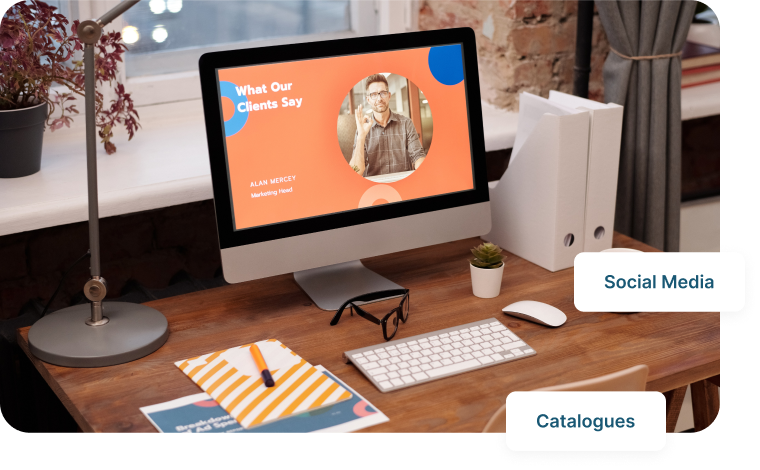
Presentations for global marketing. How to win over the audience abroad and not get lost in translation
There is a common delusion that marketing translation is similar to literary translation: you just reproduce information of the original with some fancy words. But it’s not quite right.
Persuasiveness
Firstly, marketing translation is not about the information itself, though it is also important, but the way it is communicated. Nowadays customers can choose from a wide range of options, so standing out from the crowd is essential. This can be achieved through the brand’s voice, namely the specific words, emotional tone, brand personality and style. So, a professional marketing translator should know how to motivate, engage and convince the target audience using the right words. Of course, ideas and style of the original presentation should be recreated as well.
Speciality
Marketing translation also requires deep knowledge of the field in both source and target language. Being an expert in your field doesn’t mean that you can be an expert in the same field in different countries and cultures. Even if the concepts are same, the way of presenting them before an audience may differ from one culture to another. The translator takes it into account, as marketing materials appeal to both ordinary people and professionals who will definitely pay attention to such details.
Culture
To promote your business and attract customers worldwide, you need to talk to them in “their language”, which means to understand and respect their culture and traditions when presenting your brand or business. Cultural preferences and local traditions should not only be understood but considered when translating to avoid any costly mistakes. Some things that work in the source material may not reach the same effect with the target audience from other countries, and even offense and drive people away from your product. Just that happened to the Spanish translation of the “Got Milk?” ad campaign. Both the literal translation that read as “Are you lactating?” and the idea of a Latina mother running out of milk were rather offensive to the Latino family-oriented community.
Humour
Though humour is a universal concept, it is perceived differently depending on the culture. For example, British sense of humour is often associated with sarcasm, irony and self-deprecation, Germans love to make jokes about political satire and social taboos, and people from Eastern countries like China and Japan don’t perceive humour as a positive trait and believe that it belongs to experts. So, it’s recommended to pay extra attention to humour in materials to be translated and adjust or even remove it if necessary.
Change of Design
Translation of marketing materials extends to more than just the written text. Cultural differences of the target audience may also result in changing design. In case of presentations, you should firstly consider images and colours used. Could they have negative connotations within the target audience? For example, thumbs up are seen as a very rude gesture in many Middle Eastern countries, so don’t use images with this gesture for them.
Also, make sure that your presentation looks appealing in terms of typography and the way the text is placed on slides, as it may require changes due to specifics of the language. Consider the reading of the text and its volume in the target language. For example, texts in Arabic and Hebrew should be read from right to left, and when translating from English into Russian you will usually end up having longer texts. All this may affect aesthetics of the presentation and your communications.
If you really want your presentation to work in other languages, don’t see it only as a text to be translated in a literary language. The materials need not to be rendered in a foreign language but re-crafted by a professional. It is a creative process where meaning and tone are more important than making a direct translation.

